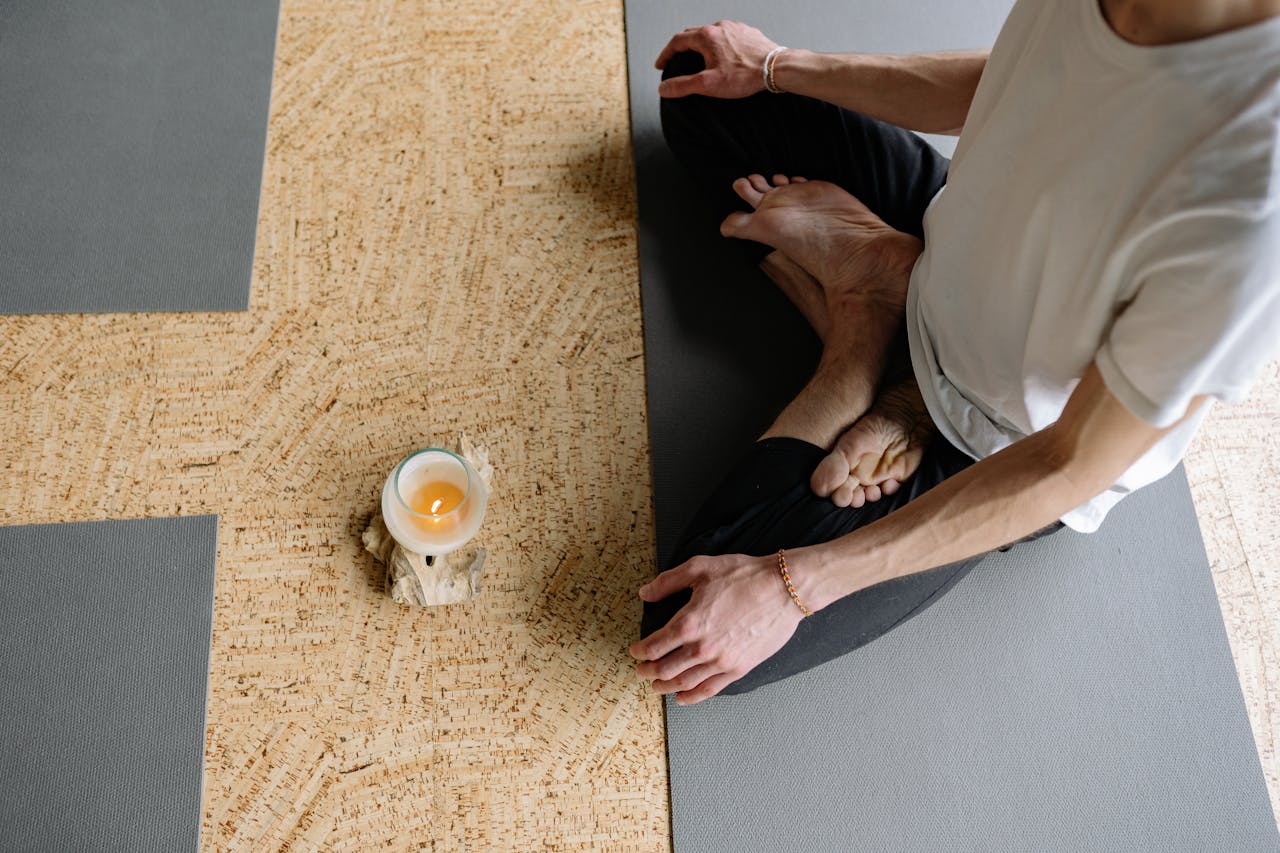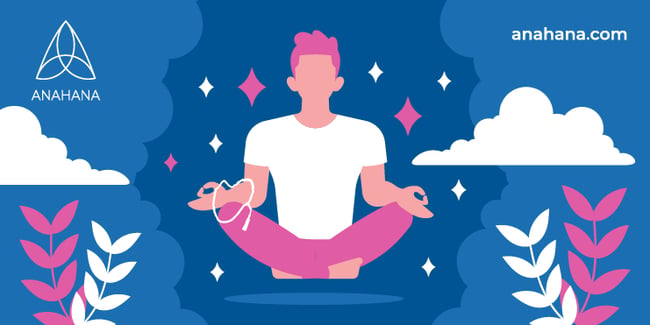
Table of Contents
Discover Mindfulness Meditation: Learn the art of mindfulness meditation with practical insights and a straightforward guide. This article provides step-by-step instructions, offering techniques to enhance focus, reduce stress, and foster mental clarity. Elevate your well-being through the transformative practice of mindfulness meditation.
What is Mindfulness Meditation?
Mindfulness meditation is an ancient practice with roots dating back thousands of years, particularly in the contemplative traditions of ancient India.
Combining mindfulness and meditation teaches you to cultivate present-moment awareness by focusing on your conscious physical sensations and thoughts. Mindfulness has been passed down through various spiritual and philosophical traditions, becoming today's most widely practiced form of meditation.
Attaining mindfulness means deepening the connection with body and mind and tuning into emotions. Mindfulness can help you gain self-awareness, self-regulation, self-transcendence, a sense of interconnectedness with others, and a profound state of relaxation.
Many meditation techniques are classified as mindfulness meditation, and they all typically include a combination of deep breathing and observing awareness.
Setting aside 30 minutes for practicing mindfulness meditation, engaging in mindful activities, or integrating them into your daily routine can result in significant self-improvement.
How Mindfulness Meditation Works
Mindfulness supports and enhances physical and mental health. Mindfulness is beneficial for self-awareness and self-regulation, or the ability to know yourself, manage impulses, resist distractions, and maintain mood and attention.
Research suggests that changes in the brain's structure are related to mindfulness. These key brain areas impacted by meditation:
-
Prefrontal Cortex (PFC): The PFC, particularly the dorsolateral prefrontal cortex (dlPFC) and ventromedial prefrontal cortex (vmPFC) is involved in executive functions such as decision-making, impulse control, and emotion regulation. Mindfulness meditation has been shown to strengthen connections within the PFC.
-
Anterior Cingulate Cortex (ACC): The ACC is involved in monitoring and regulating cognitive processes, including attention, conflict monitoring, and error detection. Mindfulness meditation has been associated with increased activity and connectivity in the ACC, which may contribute to improved attentional control and cognitive flexibility.
-
Insula: The insula involves interoception or the awareness of internal bodily sensations. Mindfulness meditation has increased activity in the insula, leading to greater awareness of bodily sensations and emotions and improved emotion regulation.
-
Hippocampus: The hippocampus is involved in memory formation and emotional regulation. Mindfulness meditation has been associated with increased gray matter density and volume in the hippocampus, which may contribute to improvements in memory, learning, and emotional resilience.
-
Amygdala: The amygdala processes emotions, particularly fear and threat detection. Mindfulness meditation has been shown to reduce amygdala reactivity to emotional stimuli, leading to decreased anxiety and stress responses.
-
Default Mode Network (DMN): The DMN is a network of brain regions linked to self-referential thinking, mind-wandering, and rumination. Mindfulness meditation has been associated with reduced activity and connectivity in the DMN, leading to decreased rumination and increased present-moment awareness.
Mindfulness meditation can induce neuroplastic changes in the brain, leading to enhanced attention, emotion regulation, self-awareness, and overall well-being.
Mindfulness can help you become more aware of others around you as well. Consistent mindfulness practice can effectively change how the brain works and foster more regular mindfulness in everyday life.
Research also suggests that regular mindfulness practice can be beneficial in treating clinical disorders that significantly negatively affect a person’s well-being.
Jon Kabat-Zinn is an important figure in mindfulness meditation, and he’s widely recognized for bringing mindfulness into mainstream medicine and psychology.
"Mindfulness means paying attention in a particular way: on purpose, in the present moment, and nonjudgmentally." - Jon Kabat-Zinn.
The Benefits of Mindfulness
Practicing mindfulness meditation for just a few minutes has extensive advantages for the mind, body, soul and relationships. Here are four of the many benefits you may develop through regular practice:
Chronic Pain Management
Research supports the connection between regular mindfulness practice and decreased pain.
This research suggests activating specific mind areas through mindfulness helps the body process pain, supporting pain reduction and decreasing pain intensity.
Decreased Stress and Improved Well-being
One study published by PubMed found that a brief mindfulness meditation practice, multiple times per week, can improve stress and well-being, with potentially lasting effects.
It allows you to access a deep state of relaxation. Further, data suggest that meditation reduces cortisol - a hormone involved in the stress response.
Better Sleep Quality
Studies show that there is evidence that mindfulness can improve and treat aspects of sleep disturbance while preventing daytime fatigue.
Research suggests that meditating enhances melatonin production, a critical hormone essential for rest.
It helps you fall asleep faster, preserves deep sleep, and enhances rapid eye movement (REM) sleep states.
Anxiety and Depression Symptom Reduction
The effects of mindfulness improve symptoms of anxiety and depression.
Data from a randomized control trial of mindfulness meditation on individuals with anxiety disorder and depression suggests that the intervention led to significant improvement.
It changes the way that the mind reacts to stress and anxiety. For example, it overrides triggers that the prefrontal cortex and amygdala stimulate so you can respond calmly and contently.
Improved Relationships
Mindfulness enhances interpersonal relationships by fostering empathy, compassion, and emotional intelligence. Individuals become better listeners and communicators by cultivating present-moment awareness and non-judgmental acceptance.
Mindfulness practices promote deeper connections and intimacy in relationships, conflict resolution skills and emotional resilience. Additionally, couples who practice mindfulness often report greater satisfaction and harmony in their relationships.
Deeper Spiritual Connection
Mindfulness meditation is often associated with spiritual growth and inner exploration.
Mindfulness practices encourage self-reflection, compassion, and acceptance, leading to a greater sense of purpose, meaning, and fulfillment in life.
For some individuals, mindfulness serves as a pathway to spiritual awakening and a deeper understanding of the nature of existence.
Types of Mindfulness Meditation

Breathing Meditation
This practice has you focus on the senses of breathing, incorporating deep breathing to relieve stress and clear the mind instantly.
To perform breathing meditation, find a tranquil space:
-
Sit tall in a comfortable position.
-
Slow your breathing and tune into the deep breath, feeling the air moving in and out of your lungs. The body may naturally start to calm down.
-
As the mind wanders and drifts into the past or future or takes notice of sounds coming from the next room, be patient and gently bring it back to focusing on the breath.
-
Stay here for five to seven minutes, then slowly open your eyes and continue with the day.
Body Scan
Body scan meditation practice is an effective mindfulness-based stress reduction technique.
To perform body scan meditation:
-
Get comfortable in a seated or lying position.
-
Take deep breaths to relax.
-
Scan your body, starting from your feet or head. Focus on each body part, noticing sensations.
-
Be non-judgmental if your mind wanders; return to the body.
-
Conclude by acknowledging your whole body.
Loving-kindness Meditation
This practice has you manifesting positive love for others, yourself, and the world around you.
Evidence suggests that those who regularly practice this meditation develop greater compassion, forgiveness, acceptance, etc.
To perform loving-kindness meditation:
-
Sit comfortably, elongate your spine, close your eyes, and start breathing deeply.
-
Imagine yourself experiencing complete inner peace and overall well-being. Feel unconditional love for yourself and all you are, knowing that you are enough and are just right.
-
Feel completely content and calm as you breathe in feelings of love, tension, and negativity.
-
Repeat loving mantras like "May I be safe, healthy, happy, and appreciated."
Observing-thought Meditation
This mindfulness practice teaches you to take notice of thoughts that arise and to label them (as a function of the mind, such as thinking, remembering, planning, fantasizing, analyzing, etc.) but without a positive or negative judgment.
It helps you view thoughts and feelings objectively so you can learn and adapt, helping you develop a stronger sense of self.
To perform simple observing-thought meditation:
-
Find a comfortable position.
-
Focus on your breath as an anchor.
-
Let thoughts and emotions arise without attachment, resistance, or judgment.
-
Observe thoughts without judgment, like leaves flowing on a stream.
-
Learn from these observations and return to your breath when ready to conclude.
Frequently Asked Questions
Where does mindfulness meditation come from?
Mindfulness meditation originated from Buddhist philosophy, dating back close to 2500 years. However, Jon Kabat-Zinn only introduced the practice to the Western world in 1975.
How do you practice mindfulness meditation in daily life?
A busy schedule can make it hard to fit mindfulness meditation into the day. We rarely give ourselves a moment between work, taking care of kids, and running errands.
If you can’t find a break in your day, there are ways to incorporate mindfulness meditation into everyday activities.
During daily exercises and activities, shift the awareness inside and clear the mind. Focus purely on the breath, the physical body, or the activity you are partaking in. This is an excellent way to start the practice of mindfulness meditation.
References
Less stress, clearer thoughts with mindfulness meditation – Harvard Gazette
The neuroscience of mindfulness meditation
Mindfulness Meditation for Chronic Pain: Systematic Review and Meta-analysis
Disclaimer
The contents of this article are provided for informational purposes only and are not intended to substitute for professional medical advice, diagnosis, or treatment. It is always recommended to consult with a qualified healthcare provider before making any health-related changes or if you have any questions or concerns about your health. Anahana is not liable for any errors, omissions, or consequences that may occur from using the information provided.

By: Meriah McCauley
Meriah McCauley is a leading voice in holistic healing, known across North America for her expertise in chakra balancing, spiritual alignment, and energy-based wellness. Her work bridges the art and science of mind-body healing, shaped through years of study, practice, and mentorship. Meriah deepened her understanding of spiritual anatomy and the chakra system under the guidance of her guru, Dr. Don Stapleton, during her immersive training in Costa Rica. She later earned her Master’s degree in Psychology from Columbia University, specializing in Spirituality and the Mind–Body connection, which continues to influence her integrative approach. Today, she supports individuals and practitioners through coaching, yoga teacher trainings, chakra-focused education, and Holotropic Breathwork for personal transformation. Meriah is dedicated to helping others develop emotional clarity, energetic balance, and spiritual resilience—and she remains committed to guiding anyone seeking a deeper, more meaningful connection with themselves.